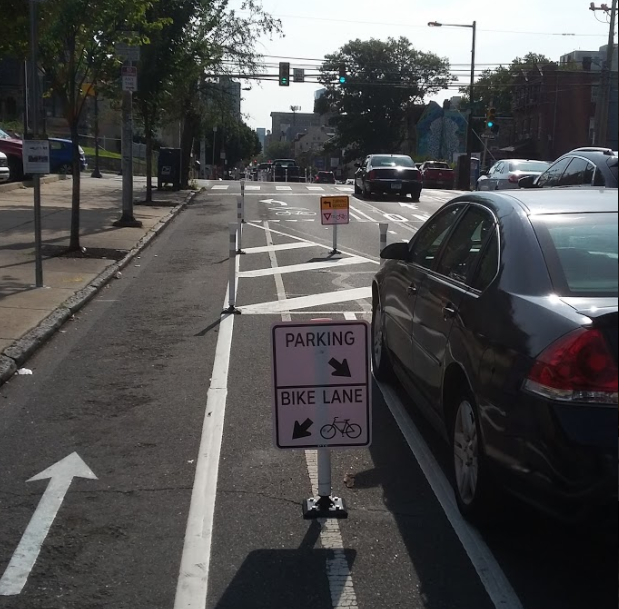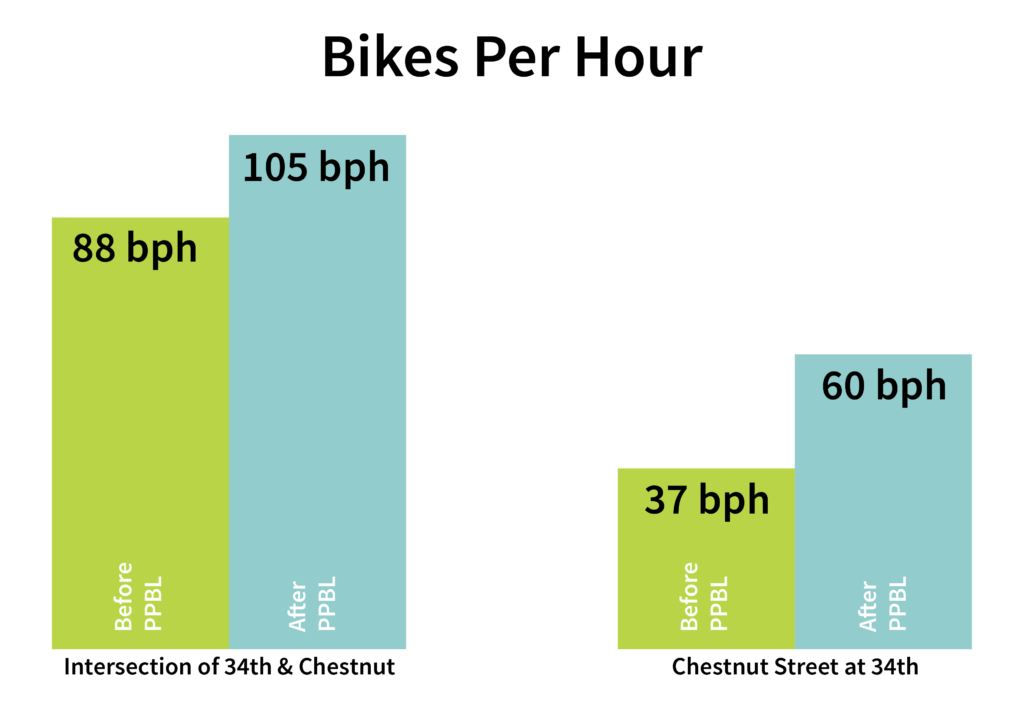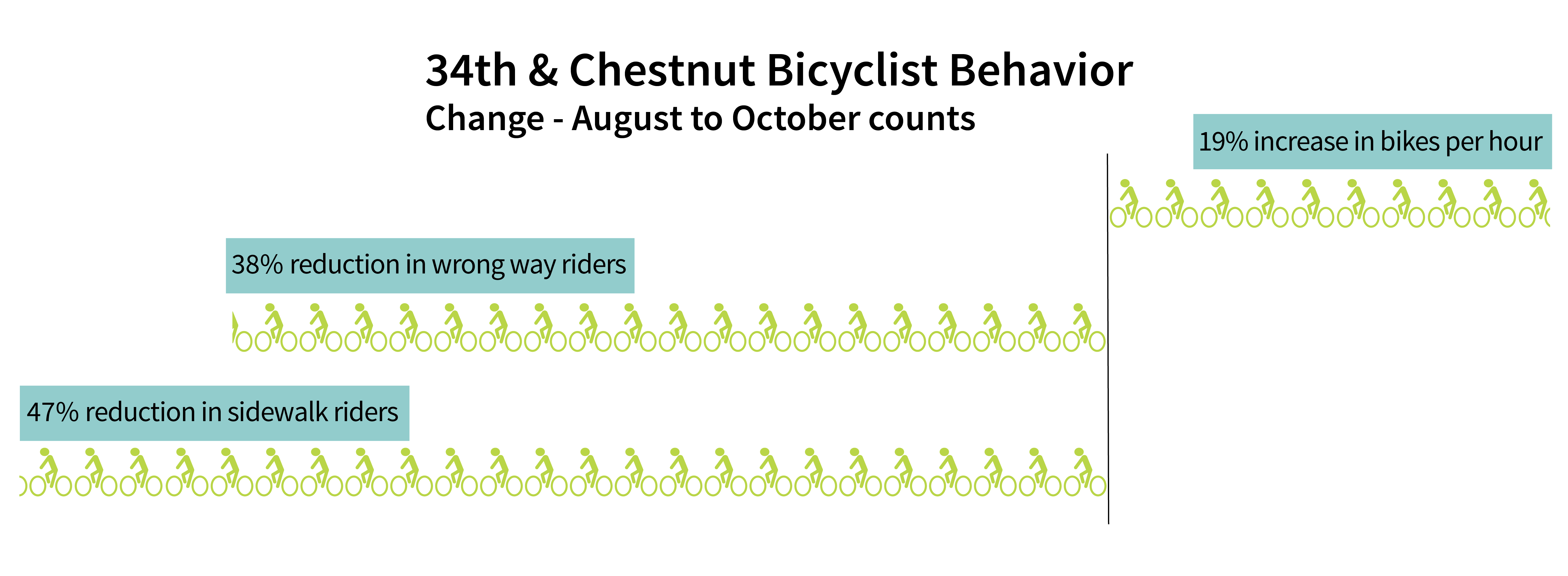
By Kyle Hearing
In an effort to understand the impact of the West Chestnut Street parking-protected bike lane, the Bicycle Coalition of Greater Philadelphia has been busy collecting data. Two sets of recent bike counts gathered data on bicyclist behavior before and after the lane was installed, while an online survey was used to learn more about what bicyclists who have ridden the lane think about this new infrastructure.
As was expected, our counts found a large increase in bicycle traffic. We found a 63 percent increase in bicycle traffic along Chestnut at 34th Street and a 19 percent increase in bicycle traffic through the intersection overall.

Our counts additionally revealed a dramatic improvement in bicyclist behavior at the intersection. After the installation of the parking-protected bike lane, the proportion of bicyclists traveling the wrong way decreased 38 percent while the proportion of bicyclists riding on the sidewalk decreased 47 percent. These behaviors cause confusion and create dangerous situations for pedestrians which is why we are thrilled to see that the new lane has reduced their occurrence. Our counts have regularly found, through the years, that bicyclist behavior improves with improved infrastructure.

In addition to mitigating bad behavior, the parking-protected bike lane has increased bicyclists’ perceptions of safety. The overwhelming majority — 89 percent — of bicyclists we surveyed reported feeling safer riding in the lane than they do on most streets in Philadelphia. Ninety-one percent of cyclists believe the lane clearly and effectively separates road users. Eighty-five percent believe it reduces conflicts between road users, and 86 percent said it makes bicyclist and driver behavior more predictable.
Bicyclists cite safety more than any other reason when asked to rationalize their law-breaking behavior (drivers and pedestrians most frequently cite saving time). Our bike counts revealed that law-breaking behavior by bicyclists declined at the intersection of 34th and Chestnut after the installation of a parking-protected bike lane; this may be related to our survey findings that bicyclists believe that the lane is safe and clearly separates road users.
Between mitigating the number of bicyclists riding on the sidewalk and shortening crossing distances, it is possible that the new lane has improved safety for pedestrians as much as it has for bicyclists. We hope to see these trends continue and will keep you updated as we continue to keep tabs on one of our favorite pieces of bicycle infrastructure.
